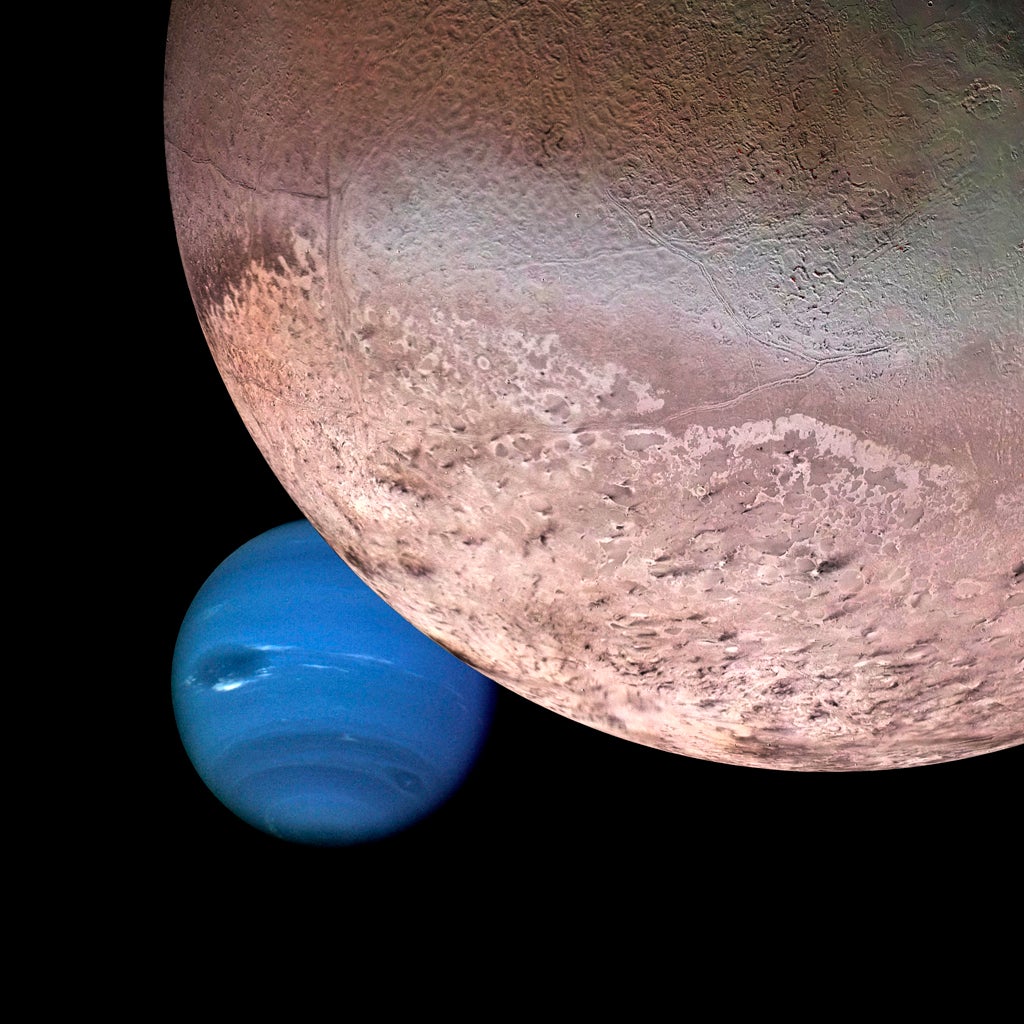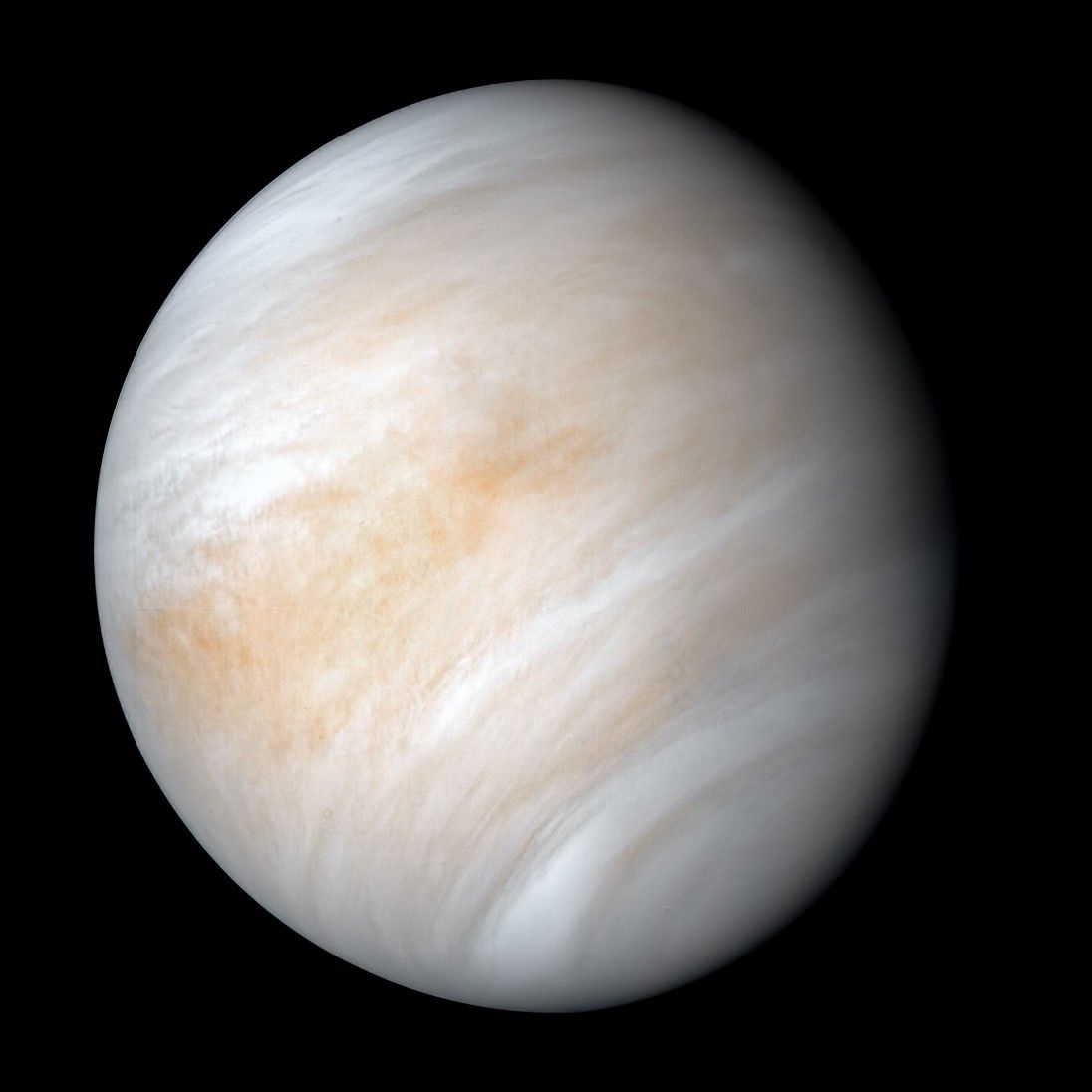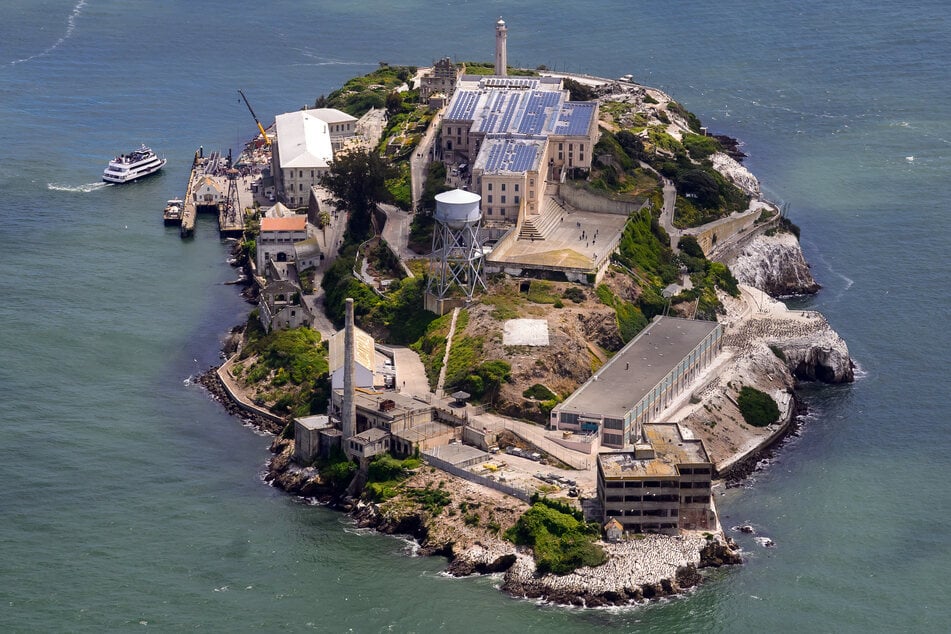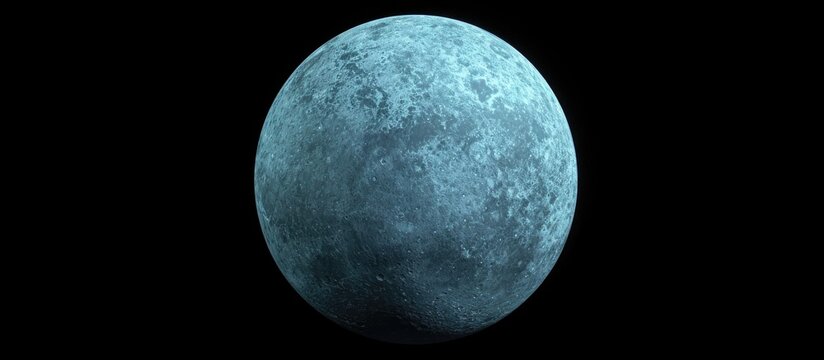Triton: Neptune's Captured Moon
Triton, Neptune's largest moon, is a cosmic wonder with icy volcanoes, a retrograde orbit, and a mysterious past as a captured Kuiper Belt object. Explore its unique geology, thin atmosphere, and the secrets of its distant origin.

Discovery
Triton, Neptune's largest moon, was discovered on October 10, 1846, by British astronomer William Lassell, just weeks after Neptune itself was identified. The moon is named after Triton, the son of Poseidon in Greek mythology, aligning with the tradition of naming Neptune's moons after mythological sea gods.
Size and Composition
Measuring about 2,706 kilometers (1,681 miles) in diameter, Triton is the seventh-largest moon in the solar system, nearly matching Earth's Moon in size. Its density suggests a composition of roughly equal parts water ice and rocky material. This combination indicates a differentiated structure, with a rocky core enveloped by an icy mantle.
Retrograde Orbit
Uniquely, Triton orbits Neptune in a retrograde direction, meaning it moves opposite to the planet's rotation. This unusual orbit suggests that Triton was likely a Kuiper Belt object captured by Neptune's gravity, rather than forming in place. Such a capture would have generated significant tidal heating, potentially leading to geological activity.
Surface Features
Triton's surface is a mosaic of varied terrains, including smooth plains, rugged highlands, and large depressions. Notably, it exhibits cantaloupe-like terrain—regions with irregular, dimples resembling the skin of a cantaloupe melon. This distinctive landscape is unique in the solar system and suggests a history of geological processes.
Cryovolcanism
Voyager 2 images revealed evidence of cryovolcanism on Triton, where icy volcanoes eject water, ammonia, or methane instead of molten rock. These cryovolcanoes have likely resurfaced areas of Triton, contributing to its relatively young surface age. Such activity indicates internal heat, possibly from tidal interactions during its capture.
Thin Atmosphere
Triton possesses a tenuous atmosphere composed mainly of nitrogen, with traces of methane. This thin layer results in surface pressure much lower than Earth's atmosphere. Despite its scarcity, the atmosphere supports thin clouds and contributes to seasonal changes observed on the surface.
Geysers and Plumes
Active geysers have been observed on Triton, spewing nitrogen gas and dark particles up to 8 kilometers (5 miles) high. These plumes are driven by solar heating, causing subsurface nitrogen ice to vaporize and escape through surface cracks. This activity highlights Triton's dynamic nature, even in the distant reaches of the solar system.
Potential Subsurface Ocean
The possibility of a subsurface ocean beneath Triton's icy crust has intrigued scientists. If present, such an ocean could provide conditions favorable for microbial life. The internal heat required to maintain such an ocean might result from residual heat from its capture or radioactive decay.
Exploration
To date, the only spacecraft to visit Triton is NASA's Voyager 2, which flew by in 1989. The mission provided invaluable data and images, revealing Triton's unique characteristics. However, much of Triton remains unexplored, and future missions are necessary to fully understand this intriguing moon.
Conclusion
Triton's retrograde orbit, active geology, and potential subsurface ocean make it one of the most fascinating moons in the solar system. Its unique features offer insights into planetary formation and the dynamic processes that can occur on icy bodies. Further exploration could unveil more about Triton's mysteries and its potential for harboring life.
What's Your Reaction?












/https://tf-cmsv2-smithsonianmag-media.s3.amazonaws.com/filer_public/54/66/546650fa-26a4-40fd-8d6d-5a7a04540f81/rosetta2.png)
:max_bytes(150000):strip_icc():focal(999x0:1001x2)/robert-prevost-050825-1-39395418ab494da5a3a700c9478e66c8.jpg)















































format(webp))
format(webp))























